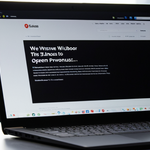
Virtual Private Networks (VPNs) have become increasingly important tools for iPhone users seeking to protect their online privacy and secure their data while connected to various networks, from public Wi-Fi hotspots to corporate environments. This comprehensive analysis examines the multifaceted process of enabling VPN functionality on iPhone devices, exploring the technical infrastructure, setup methodologies, available protocols, performance implications, and security considerations that users should understand before implementing VPN protection. The process of enabling a VPN on an iPhone involves understanding both the app-based approach, which most users find convenient and streamlined, and the manual configuration method that provides greater control for advanced users and enterprise deployments. iPhone users benefit from Apple’s built-in VPN support through native protocols including IKEv2, IPsec, and L2TP, which can be utilized either through dedicated VPN applications or through direct configuration in device settings. This analysis covers the complete spectrum of VPN implementation on iPhone, from initial setup through ongoing management, addressing the technical requirements, security implications, battery considerations, and practical recommendations for both personal and professional use cases.
Understanding Virtual Private Networks and iPhone Compatibility
A Virtual Private Network fundamentally operates by encrypting internet traffic and routing it through a secure intermediary server, thereby masking the user’s real Internet Protocol address and location while making it considerably more difficult for external parties to monitor online activity. When considering VPN implementation on iPhone devices, users should first understand that Apple’s iOS operating system has provided native support for VPN functionality for several years, meaning that basic VPN connectivity does not necessarily require third-party applications, though dedicated VPN apps offer enhanced features and user-friendly interfaces. The iPhone’s built-in VPN capabilities stem from Apple’s integration of industry-standard protocols that have been proven secure and reliable across enterprise and consumer environments.
The underlying purpose of utilizing a VPN on an iPhone extends beyond simple privacy concerns. For consumers, the primary benefit involves securing connections when using public Wi-Fi networks, such as those found in coffee shops, airports, or hotels, where unencrypted connections leave devices vulnerable to interception and data theft. The encryption that a VPN provides ensures that even if an unauthorized person gains access to the network traffic, the data remains indecipherable without the appropriate decryption keys. Additionally, VPNs mask the user’s IP address from websites and online services, preventing IP-based tracking that could reveal geographic location, associated area codes, and other device identifiers that websites and Internet Service Providers could otherwise collect. For enterprise users, VPNs serve the critical function of securing access to corporate resources, ensuring that employees can safely connect to company networks and access sensitive data from remote locations without exposing that information to potential interception.
However, users should recognize that despite the significant protections offered by VPNs, they represent only one component of a comprehensive security strategy rather than a complete security solution. A VPN does not verify device health or user intent, meaning that malware-infected devices can still compromise network security, nor does a VPN protect against all forms of cyber threats such as malware, phishing, or social engineering attacks. Furthermore, users should understand that VPN connections do introduce some trade-offs, particularly regarding internet speed and battery consumption, though these impacts have become increasingly minimal with modern VPN implementations and newer iPhone hardware.
VPN Setup Methods and Installation Procedures
iPhone users have two primary pathways for establishing VPN connectivity: using a dedicated VPN application from the Apple App Store (the recommended approach for most users) or manually configuring VPN settings directly through the device’s native settings interface (preferred by advanced users and IT administrators). The app-based method represents the most straightforward and user-friendly approach, offering a simplified interface that abstracts away much of the technical complexity involved in VPN configuration. The manual configuration method, while requiring greater technical knowledge and access to specific server details from the VPN provider, provides more granular control over VPN settings and does not require downloading and running additional applications, which some users may prefer from a privacy or performance perspective.
The fundamental difference between these approaches lies in ease of use versus control. When using the app-based method, VPN providers handle much of the configuration automatically, allowing users to connect with merely a few taps after downloading and installing the application. This approach particularly benefits users without technical expertise, as the VPN application manages server selection, protocol optimization, and connection establishment. Conversely, manual configuration requires users to possess specific technical information from their VPN provider, including the server address, username, password, and the desired VPN protocol, making it less practical for casual users but offering benefits for those who need or prefer direct control over their VPN parameters.
Before implementing either setup method, users should ensure their iPhone runs the latest available iOS version, as Apple regularly releases security updates and improvements that enhance both VPN functionality and overall device security. Checking the iOS version involves navigating to Settings, selecting General, and then tapping About to view the current operating system version. If an update is available, users should download and install it before configuring their VPN, as this ensures compatibility and access to the latest security features. Additionally, users should verify that they possess either a VPN account through a commercial VPN service or, for enterprise users, the specific VPN configuration details provided by their organization’s IT department.
Supported VPN Protocols and Technical Architecture
Apple’s iOS devices support multiple industry-standard Virtual Private Network protocols, each offering different balances between security, speed, and compatibility characteristics. The primary protocols supported by iPhone include Internet Key Exchange version 2 (IKEv2) paired with Internet Protocol Security (IPsec), Layer 2 Tunneling Protocol (L2TP) combined with IPsec, and standalone IPsec implementations. Additionally, VPN apps downloaded from the App Store can implement other protocols such as OpenVPN, WireGuard, and proprietary solutions developed by specific VPN providers, offering users greater flexibility in selecting the most appropriate protocol for their particular use case.
IKEv2/IPsec represents Apple’s recommended and most commonly utilized protocol for iPhone VPN connections. IKEv2 serves as the protocol responsible for establishing and managing the initial key exchange that secures the connection, while IPsec handles the actual encryption and authentication of the data traffic flowing through the tunnel. The combination offers several advantages, particularly for mobile devices, as IKEv2 includes built-in support for MOBIKE (Mobility and Multi-homing Protocol), which allows seamless reconnection when the device switches between cellular data and Wi-Fi networks without losing the VPN connection. This capability proves especially valuable for iPhone users who frequently move between different network types throughout their day. From a security perspective, IKEv2/IPsec with modern authentication methods provides robust protection, supporting authentication through shared secrets, RSA certificates, and ECDSA certificates, as well as advanced authentication protocols like EAP-MSCHAPv2 and EAP-TLS.
L2TP/IPsec represents an alternative protocol supported by iPhone that offers moderate security and has been widely deployed across enterprise networks for many years. Layer 2 Tunneling Protocol creates the actual tunnel through which data passes, while IPsec provides the encryption layer, making the protocol combination function similarly to IKEv2/IPsec in terms of architecture. L2TP/IPsec typically authenticates users through MS-CHAPv2 passwords for user-level authentication and shared secrets for machine-level authentication, providing a well-established authentication framework that many organizations have standardized upon. However, L2TP/IPsec generally performs slightly slower than IKEv2 on mobile devices and lacks the native MOBIKE support for seamless network switching.
IPsec as a standalone protocol provides another option supported by iPhone, offering flexibility in how the protocol can be implemented and customized. IPsec can operate in two distinct modes: transport mode, which encrypts only the data payload of packets, and tunnel mode, which encrypts the entire packet including headers, providing more comprehensive protection at the cost of slightly higher overhead. IPsec supports authentication through passwords, tokens, and certificates, offering organizations flexibility in their authentication architecture.
For users downloading VPN applications from the App Store, additional protocols beyond these native options become available. OpenVPN represents a widely-used open-source protocol known for combining strong security with moderate speed and excellent cross-platform compatibility. OpenVPN can utilize either UDP (User Datagram Protocol) for faster but potentially less reliable connections or TCP (Transmission Control Protocol) for slower but more reliable connections, allowing users to select based on their network conditions and priorities. WireGuard has emerged as a newer protocol gaining adoption rapidly, offering exceptional speed through its streamlined, lightweight implementation while maintaining strong security through modern cryptography standards. The protocol consists of comparatively few lines of code compared to alternatives, reducing the potential attack surface while improving processing efficiency.
When selecting a VPN protocol, users should consider several factors including the specific use case, the device being used, security requirements, and performance priorities. For most users on modern iPhones, IKEv2 provides an excellent default choice, offering strong security, good performance, and seamless network transitions. Users primarily concerned with speed and willing to accept slightly more complex configuration might prefer WireGuard through a dedicated app. Organizations with established L2TP/IPsec infrastructure may continue using that protocol for compatibility reasons.
VPN App Installation and Configuration
The most straightforward method for most users to establish VPN protection on their iPhone involves downloading and installing a dedicated VPN application through Apple’s App Store. This process begins by opening the App Store application on the iPhone and searching for a VPN service that meets the user’s needs and preferences. The App Store contains numerous VPN options, ranging from free services with limited features to premium services offering extensive server networks, advanced security features, and fast connections.
After identifying and selecting a desired VPN provider, users tap the “Get” button followed by “Install” to download the application to their device. During installation, users may need to authenticate using Face ID, fingerprint recognition, or their Apple ID password, as iOS requires authorization before installing new applications. Once installation completes, users can either immediately open the app or access it later through their home screen or the App Library.
Upon opening the VPN application for the first time, users will typically encounter an account setup screen requiring them to either create a new account or sign into an existing account with the VPN provider. This process varies slightly depending on the specific VPN service but generally involves entering an email address and password, or alternatively, creating new credentials directly within the app. Many VPN providers offer free tiers with limited functionality, premium subscription options, or trial periods allowing users to test the service before committing to payment. Users should carefully review the terms of service and privacy policy of their chosen VPN provider, as significant differences exist between reputable paid services and some free alternatives regarding data logging and usage policies.
After successfully creating or logging into their account, users will encounter a permission request from the VPN app seeking permission to add VPN configurations to the device. This permission prompt requires users to tap “Allow” and typically necessitates entering their iPhone passcode or using biometric authentication such as Face ID or Touch ID to confirm the action. This security measure ensures that only authorized parties can add VPN configurations to the device, protecting against unauthorized VPN installations. Granting this permission allows the VPN application to establish the necessary system-level VPN profile, enabling the app to intercept and route network traffic through the VPN tunnel.
Once permissions have been granted and configuration is complete, users can access the main interface of the VPN application, which typically features a prominent connect button or toggle switch. Tapping this button initiates the VPN connection, with the application automatically selecting an appropriate VPN server, often choosing based on geography or current network conditions to optimize for speed and reliability. Most VPN apps display connection status prominently, showing whether the VPN is currently connected or disconnected, and may display additional information such as the current server location, connection duration, or data transferred.
Advanced VPN applications often provide additional configuration options allowing users to customize their VPN experience according to their preferences and requirements. These options typically include the ability to manually select specific VPN servers or geographic locations rather than relying on automatic selection, choose between available VPN protocols if the provider offers multiple options, enable or disable security features such as kill switches or ad blocking, configure auto-connect settings to automatically establish VPN connections when connecting to Wi-Fi or cellular networks, and adjust proxy settings if required. Understanding these options enables users to optimize their VPN configuration for their specific use cases and network environments.

Manual VPN Configuration Process
For users who prefer not to install additional applications, or who have specific VPN requirements from their employer or organization, iOS provides the capability to manually configure VPN connections directly through the device’s Settings application. This manual configuration approach requires users to possess specific technical information from their VPN provider or organization, including the VPN server address, the desired protocol (IKEv2, IPsec, or L2TP), the remote ID or pre-shared key, and valid authentication credentials. The process begins by opening the Settings application on the iPhone and navigating to the General settings panel.
Once in the General settings, users scroll down to locate the “VPN & Device Management” or “VPN” option, which may appear in slightly different positions depending on the specific iOS version. Tapping on this option reveals the VPN configuration interface, where users can add new VPN configurations or manage existing ones. To add a new VPN configuration, users select the “Add VPN Configuration” or “Add Configuration” option. iOS then presents a menu requesting the user to select the VPN protocol type.
The protocol selection represents a critical decision point in manual configuration, as different protocols have different requirements and implications. IKEv2 is recommended as the default choice for most users due to its modern design, strong security, and excellent mobile performance. L2TP/IPsec offers compatibility with more established infrastructure but slightly lower performance. IPsec provides flexibility but requires more detailed configuration knowledge. After selecting the protocol, the configuration interface expands to display protocol-specific fields that require completion.
For IKEv2 connections, users must enter several key pieces of information. The “Description” field allows users to create a recognizable name for the VPN configuration, such as “Work VPN” or “Remote Access”. The “Server” field requires the IP address or hostname of the VPN server to which the device will connect. The “Remote ID” field, typically provided by the VPN administrator or provider, serves as an identifier for the VPN server and ensures the device connects to the correct endpoint. Under the authentication section, users select the authentication method (typically “Username” for credential-based authentication) and enter their username and password. Some IKEv2 configurations may require certificate-based authentication instead, in which case users would need to have previously installed the appropriate certificate on their device.
L2TP/IPsec manual configurations require similar information with some variations. The configuration still requires a description, server address, and authentication credentials, but the specific fields and their labeling may differ slightly from IKEv2. L2TP/IPsec configurations require both a pre-shared key (sometimes called a shared secret) for the IPsec layer and username/password credentials for the L2TP authentication layer. Additionally, L2TP/IPsec configurations typically include fields for specifying machine authentication parameters and may require additional cryptographic settings.
After entering all required information, users tap “Done” to save the VPN configuration. iOS validates the entered information and stores the configuration, making it available for connection. If the configuration contains errors or missing required fields, iOS will typically display an error message indicating what needs to be corrected. Upon successful creation, the VPN configuration appears in the VPN settings list and can be connected to by toggling the switch next to its name.
For users requiring OpenVPN or other third-party protocols that iOS does not natively support, a different approach is necessary. These protocols require downloading the appropriate VPN client application from the App Store, which handles the protocol implementation and connection management. For example, users seeking to connect via OpenVPN would download the OpenVPN Connect application from the App Store, import their OpenVPN configuration file, and manage connections through that application.
Connecting, Disconnecting, and Managing VPN Connections
Once a VPN configuration has been established either through an app or manual configuration, connecting to the VPN involves a straightforward process. For app-based VPN services, users simply open the VPN application and tap the connect button or toggle switch, with the app handling all connection establishment details. Most VPN applications automatically optimize server selection based on the user’s location and current network conditions, or users can manually select a specific VPN server if preferred. The connection process typically takes a few seconds to complete, after which the app confirms successful connection and may display the IP address location and server details.
For manually configured VPN connections, users access the connection through Settings > General > VPN & Device Management > VPN and toggle the switch next to their configured VPN profile to the “On” position. The connection establishment process mirrors that of app-based connections, with the VPN attempting to connect and displaying status once complete.
Upon successful connection, users should observe a VPN status indicator appearing in their device’s status bar. On modern iPhones, this indicator appears in the Control Center (accessed by swiping down from the top-right corner of the screen) rather than the main status bar, displaying “VPN” or a VPN icon confirming active VPN protection. This visual indicator provides important reassurance that the VPN is functioning and protecting the user’s traffic.
Disconnecting from the VPN can be accomplished through multiple methods depending on the user’s preference. For app-based VPN services, opening the VPN application and tapping the disconnect button immediately terminates the VPN connection. Alternatively, users can disconnect by accessing Settings > General > VPN & Device Management > VPN and toggling the VPN switch to “Off”. If the VPN has auto-connect enabled, users should access the VPN app’s settings and disable the auto-connect feature to prevent automatic reconnection.
Managing VPN connections involves more than simple connection toggling. Users can customize VPN behavior through various settings, such as enabling auto-connect to automatically establish VPN connections when connecting to specific Wi-Fi networks or when using cellular data. This ensures continuous VPN protection without requiring manual intervention. Some advanced VPN apps offer the ability to configure different VPN settings for different app usage, enabling granular control over which applications route their traffic through the VPN. This per-app VPN configuration allows users to protect only the apps requiring VPN protection while potentially allowing other apps to connect directly, though split tunneling is not natively supported on iOS due to platform restrictions.
For enterprise users, managing VPN connections may involve organization-supplied configuration profiles that automatically configure VPN settings without requiring manual entry. These profiles can be installed through email, mobile device management (MDM) systems, or other deployment mechanisms, streamlining the setup process for organizations managing fleets of devices.
Removing and Troubleshooting VPN Configurations
If users wish to completely remove a VPN configuration from their device, either to switch to a different VPN service or because they no longer require VPN protection, several removal methods exist depending on how the VPN was configured. For app-based VPN services, the simplest removal method involves uninstalling the VPN application through the standard iOS app removal process. Users press and hold the VPN app icon on their home screen, tap “Remove App,” select “Delete App,” and confirm the deletion. Removing the app typically also removes its associated VPN configuration profile, though in some cases residual VPN profiles may remain and require manual deletion.
For manually configured VPN profiles, removal involves navigating to Settings > General > VPN & Device Management, locating the VPN profile to be removed, tapping the information icon (i) next to the profile name, and selecting “Delete VPN”. Confirming the deletion removes the VPN configuration from the device. For VPN profiles installed through enterprise mobile device management systems, removal may require administrator action rather than user action.
If users encounter VPN connectivity issues or problems after implementing VPN on their iPhone, several troubleshooting steps can help resolve the problems. Common issues include VPN failing to connect, frequent disconnections, poor performance, or conflicts with other network features. If the VPN fails to establish a connection, users should first verify that they have entered all VPN configuration information correctly, particularly the server address, username, and password. A stable internet connection is essential for VPN operation; users should verify that their device maintains a reliable Wi-Fi or cellular connection before troubleshooting the VPN itself.
If connection problems persist, temporarily placing the device in airplane mode and then disabling airplane mode again can reset network settings and often resolves transient connectivity issues. Users can also attempt to disconnect and reconnect to the VPN, which may resolve temporary connection problems. For app-based VPN services, updating the VPN application to the latest version through the App Store can address compatibility issues or bugs that may be causing connection problems. If updating the app does not resolve the issue, users can uninstall and then reinstall the VPN application, which completely resets the app’s configuration and often resolves persistent problems.
If VPN connectivity continues to fail after these steps, users should consult their VPN provider’s support documentation or contact their support team, providing specific error messages or connection details that might assist troubleshooting. For enterprise users experiencing VPN issues, contacting the organization’s IT department is advisable, as they can verify that the VPN configuration is properly deployed and troubleshoot issues related to network infrastructure or security policies.
Performance Implications: Battery Drain and Speed Impact
When evaluating VPN implementation on iPhone, users should realistically understand the performance implications, particularly regarding battery consumption and internet speed. Regarding battery drain, research has demonstrated that VPN usage produces measurable but relatively modest battery consumption increases on modern iPhones. Testing by VPN providers using iPhone 15 models revealed that streaming video content for one hour with VPN connected resulted in 24% battery drain, compared to 10% drain without VPN, representing a 14-percentage-point difference. While this might sound significant, placing it in context of a full day of typical device usage shows the actual impact is manageable for most users. Factors influencing battery drain from VPN usage include the strength of encryption algorithms being employed (more complex encryption requires more processor power), the distance to the connected VPN server (more distant servers may require more energy to maintain reliable connections), and the intensity of network activity.
Users can minimize VPN battery impact through several strategies. Connecting to VPN servers geographically closer to the user’s actual location typically produces better battery efficiency than connecting to distant servers, as network latency and packet retransmission requirements increase with distance. Disabling VPN when not actively using the internet can preserve battery for users concerned about consumption, though this sacrifices the continuous protection benefit. Newer iPhone models with more efficient processors handle VPN encryption operations with less power consumption than older models, so users with older devices may notice more significant battery impact. Additionally, users can review their VPN app settings to disable unnecessary features (such as ad blocking or malware protection modules) that consume additional processing power and battery.
Regarding internet speed, VPN connections typically produce a measurable but small reduction in available bandwidth compared to unencrypted direct connections, primarily due to the computational overhead of encryption and the additional routing distance data must travel. However, the speed reduction with modern VPN services and protocols is generally negligible for typical browsing, streaming, and communication activities. Testing has shown that quality VPN services typically maintain 80-90% of baseline internet speed. For example, if a user’s baseline unencrypted internet speed measures 100 Mbps, connecting through a quality VPN might reduce that to 80-90 Mbps, a reduction most users would not perceive during ordinary browsing. The perceived speed reduction depends heavily on several factors, including the VPN provider’s infrastructure quality and server capacity, the protocol being used (WireGuard and IKEv2 tend to offer better speed than older protocols), the distance to the selected VPN server, and the user’s base internet connection quality.
Users can optimize VPN speed through several approaches. Selecting VPN servers geographically closer to the user typically provides faster connections than distant servers, as packet travel time and latency decrease significantly. Premium VPN services with modern infrastructure generally deliver faster speeds than budget or free alternatives, which may employ overcrowded servers or older equipment. If available, choosing faster VPN protocols such as WireGuard or IKEv2 rather than older protocols generally improves performance. Testing different servers and protocols to identify which combination offers optimal performance for the user’s specific circumstances allows personalized optimization. For users whose primary concern is speed rather than constant VPN protection, disabling VPN for specific activities like online gaming or high-definition streaming, where every millisecond matters, can ensure optimal performance for those activities while maintaining VPN protection for other usage.

Best VPN Providers for iPhone: Comparison and Recommendations
The landscape of VPN services available for iPhone varies widely in terms of quality, security, features, pricing, and reliability. Premium paid VPN services generally deliver superior performance and more robust privacy protections compared to free alternatives. NordVPN stands out as a leading choice for iPhone users, offering more than 7,400 servers across 118 countries, consistently high performance in speed tests, strong encryption using NordLynx protocol (based on WireGuard), and reliable access to streaming services including Netflix and Hulu. NordVPN’s Panama-based jurisdiction places it outside the reach of the fourteen-eyes surveillance alliance, supporting their no-logging policy. The service supports up to ten simultaneous connections, allowing protection across multiple devices, and pricing starts at $3.39 per month for extended subscriptions with a thirty-day money-back guarantee.
ExpressVPN offers exceptional speed performance, with over 100 Mbps speeds commonly reported, along with access to over 105 server locations, making it excellent for users whose primary concern is performance. The service uses military-grade AES-256 encryption and maintains a strict no-logging policy, with the company having demonstrated its commitment to privacy through successful legal challenges against government data requests. ExpressVPN’s user interface is notably intuitive and streamlined, allowing single-tap connection, making it particularly suitable for users new to VPNs. However, ExpressVPN commands a higher price point than some competitors, with monthly subscription pricing starting around $12.95.
Surfshark has emerged as an excellent value option for budget-conscious users, offering some of the lowest pricing in the industry at $1.99 per month for extended subscriptions, while still maintaining strong security standards including AES-256 encryption and no-logging policies. The service features more than 3,200 servers across 100 countries and notably offers unlimited simultaneous connections, making it ideal for large households with many devices. Advanced features such as CleanWeb (ad and tracker blocking) and Dynamic MultiHop (routing traffic through multiple VPN servers) provide additional value beyond basic VPN functionality.
ProtonVPN deserves consideration as a reputable free VPN option, created by the scientists behind ProtonMail encrypted email service. The free tier provides access to VPN servers in three countries, unlimited data transfer (though with potential speed limitations), strict no-logging policies, and no advertisements. For users seeking a free option with genuine privacy protections rather than exploitative data harvesting, ProtonVPN’s free offering stands as one of the most trustworthy options available. Premium tiers unlock access to thousands of servers across 120+ countries, faster speeds, advanced security features, and access to streaming services.
Free VPN services in general warrant considerable caution, as they often require alternative monetization models to remain profitable. Many free VPN services collect and sell user browsing data to advertisers or other third parties, defeating the privacy purposes of VPN usage. Some free services implement restrictive bandwidth limitations or speed throttling to encourage paid plan upgrades. Others employ aggressive advertising or frequent notifications attempting to convert free users to paid subscribers. While established VPN companies offer respectable free tiers (ProtonVPN and Windscribe are notable exceptions), unknown free VPN apps found in the App Store frequently implement privacy-invading practices.
Security Considerations and Privacy Protection
When implementing VPN on iPhone, users should understand both the genuine security benefits VPNs provide and their inherent limitations and potential risks. VPNs fundamentally work by encrypting all data traffic between the user’s device and the VPN provider’s server, rendering the data unreadable to network administrators, Internet Service Providers, or hackers attempting to intercept traffic on public or poorly secured networks. This encryption protects sensitive activities such as online banking, accessing corporate email, or other activities involving sensitive information from being intercepted and read by malicious actors on the same network. The encryption uses strong algorithms such as AES-256, which provides such powerful security that breaking it through brute-force computation would require computing power and time that makes such attacks practically impossible.
However, important limitations accompany VPN security benefits. First, VPNs do not provide complete anonymity on the internet; rather, they mask the user’s IP address from websites being visited but do not prevent websites from identifying users through other means such as browser cookies, device fingerprinting, or user logins. Second, VPNs encrypt only the connection between the user’s device and the VPN server; they do not encrypt traffic within the user’s device itself, meaning that malware on the device can still compromise security. Third, and importantly, VPNs introduce a trust relationship with the VPN provider, who can theoretically observe all the traffic passing through their servers. For this reason, users must choose VPN providers with established no-logging policies and those operating in jurisdictions with strong privacy protections and minimal government surveillance cooperation.
Users should be cautious about VPN apps requesting unusual permissions not essential to VPN functionality. Concerning permission requests include location access (VPNs do not require constant location tracking), local network access (used for network reconnaissance), access to photo libraries, calendar access, or contact access. Requesting such permissions represents a red flag suggesting the app may collect and use personal data inappropriately. Additionally, users should avoid downloading VPN apps from sources other than Apple’s official App Store, as sideloaded apps bypass Apple’s security review process.
For those seeking privacy protection focused specifically on browsing activity, Apple’s iCloud Private Relay offers an alternative to traditional VPNs within the Apple ecosystem. However, it is important to understand that iCloud Private Relay differs substantially from VPNs in scope and functionality. Private Relay protects only Safari browser traffic on Apple devices and requires an iCloud+ subscription (starting at under $1 per month). It does not protect apps other than Safari, providing less comprehensive protection than a full VPN. Additionally, Private Relay is unavailable in certain countries due to regulatory restrictions. For users primarily browsing the web through Safari on Apple devices, Private Relay provides convenient native protection, but for comprehensive app-level protection or non-Safari browsers, traditional VPNs remain necessary.
Enterprise and Business VPN Implementation
For organizations deploying VPNs to employee iPhones and iPads, additional considerations arise beyond consumer use cases. Enterprise VPN implementations typically follow either BYOD (Bring Your Own Device) models, where employees use personal devices, or corporate-managed device models, where organizations own and control the devices. For BYOD environments, organizations commonly deploy VPN configurations through mobile device management (MDM) systems that automate configuration installation and management across fleets of devices. Organizations can specify which VPN protocol to use (typically IKEv2 for modern implementations), configure automatic connection policies, and manage VPN certificates through centralized MDM administration.
Apple’s iOS supports several advanced VPN deployment features for enterprise use, including VPN On Demand, which automatically establishes VPN connections when devices attempt to connect to specific domains or networks. This ensures that employees remain protected without requiring manual VPN activation, though it does require certificate-based authentication rather than user credentials. Per-app VPN allows IT administrators to specify that certain organizational apps must route traffic through the VPN while other personal apps can connect directly, balancing security requirements with performance and network efficiency. Always On VPN, available for supervised iOS devices managed through MDM, provides maximum security by ensuring all traffic routes through the VPN with no exceptions, giving organizations complete control over device traffic.
However, it is critical to recognize that VPNs alone do not constitute complete enterprise security solutions. A VPN secures traffic in transit but does not verify device health, user identity beyond initial authentication, or ongoing user behavior. Compromised devices connecting through VPN can still compromise network security, malware-infected devices can spread malware through the VPN tunnel, and legitimate users with compromised credentials can gain unauthorized access to network resources. For this reason, organizations should implement broader security frameworks combining VPNs with device management, identity verification, multi-factor authentication, device health verification, and activity monitoring to achieve comprehensive security.
Advanced VPN Features and Optimization
Modern VPN applications offer several advanced features extending beyond basic VPN functionality. Kill switches represent an important security feature that disconnects the device from the internet if the VPN connection drops unexpectedly, preventing data transmission outside the encrypted tunnel. Kill switches operate on both system-wide and per-app bases, with system-wide kill switches preventing all internet traffic if VPN connectivity is lost, while per-app variants disconnect only specific apps designated as sensitive. Users for whom VPN protection is critical should ensure their chosen VPN service includes kill switch functionality.
Ad and tracker blocking features available in some VPN applications provide protection against online tracking and reduce ad-based profiling by blocking requests to known advertising and tracking servers at the DNS level. This protection operates network-wide across all applications, not just browsers, providing comprehensive blocking that browser extensions cannot match. Some users find this feature reduces both online tracking and improves page loading speeds by preventing advertisement servers from loading.
Split tunneling functionality, where available (though notably absent from iOS due to platform constraints), allows users to specify which apps or traffic routes through the VPN while other apps or traffic bypasses the VPN. However, iOS’s closed architecture does not support true split tunneling, meaning that when a VPN is connected on iOS, either all traffic or none routes through it (determined by any apps configured for per-app VPN). This represents a deliberate design choice by Apple prioritizing simplicity and security.
Dedicated streaming servers, offered by some premium VPN providers, optimize connections for streaming video services and are specifically configured to reliably bypass streaming service VPN blocks. These servers allow users to access region-locked content from streaming platforms while maintaining VPN protection. Server rotating and changing features in some VPN apps automatically reconnect through different VPN servers periodically, potentially enhancing anonymity for users concerned about long-term traffic analysis.
Your Secure, VPN-Enabled iPhone
Enabling VPN on iPhone represents a practical and effective measure for enhancing privacy protection and securing data transmission, particularly when connecting to untrusted networks such as public Wi-Fi. The straightforward implementation process through either VPN applications or native iOS configuration makes VPN protection accessible to users across all technical skill levels. App-based VPN services provide the most convenient and feature-rich experience for typical users, with reputable premium services such as NordVPN and ExpressVPN offering strong security, reliable performance, and user-friendly interfaces. For advanced users or enterprise implementations requiring specific configurations or protocols, iOS’s native VPN support provides powerful direct configuration capabilities without requiring additional applications.
Users implementing VPN protection should select providers thoughtfully, prioritizing established services with transparent privacy policies, no-logging commitments, and strong encryption rather than selecting VPN services primarily based on price or promotional offers. Free VPN services warrant particular skepticism, as many employ privacy-invading data collection practices that undermine the privacy benefits VPNs provide. Users should enable automatic VPN connection features where available to ensure continuous protection without requiring manual intervention, though understanding that VPN connection does introduce modest battery drain and potential speed reduction compared to unencrypted connections remains important for realistic expectations.
For enterprise users, VPN implementation should complement rather than replace broader security frameworks incorporating device management, identity verification, and activity monitoring. Organizations should leverage iOS MDM capabilities to automate VPN deployment and configuration, reducing user confusion and ensuring consistent implementation across managed device fleets. Users should understand that while VPNs provide valuable protection against network-level interception and IP-based tracking, they do not address all security threats and should be combined with other security practices including strong passwords, multi-factor authentication, and cautious interaction with potentially malicious content.
As mobile device usage continues to expand and public Wi-Fi networks proliferate, VPN protection on devices such as iPhone represents an increasingly important security hygiene practice. By understanding both VPN capabilities and limitations, selecting reputable providers offering strong privacy protections, and implementing VPN connections appropriately for their specific use cases, users can significantly enhance their mobile security posture while maintaining awareness of the trade-offs inherent to any security implementation.
Protect Your Digital Life with Activate Security
Get 14 powerful security tools in one comprehensive suite. VPN, antivirus, password manager, dark web monitoring, and more.
Get Protected Now





